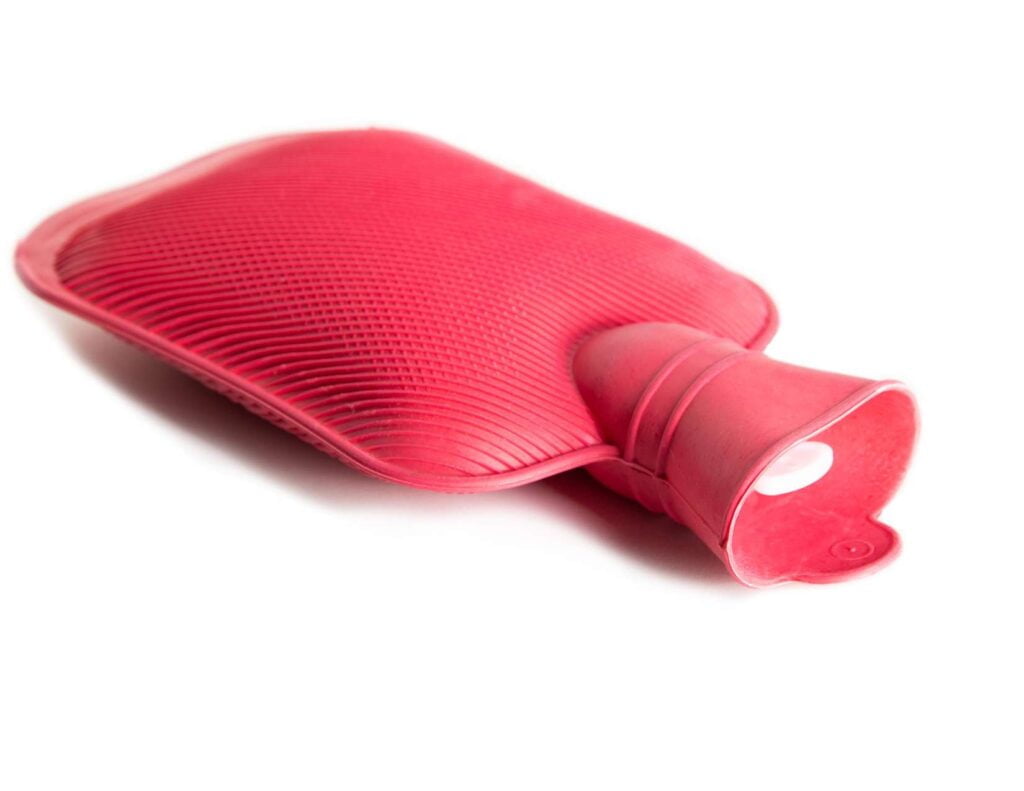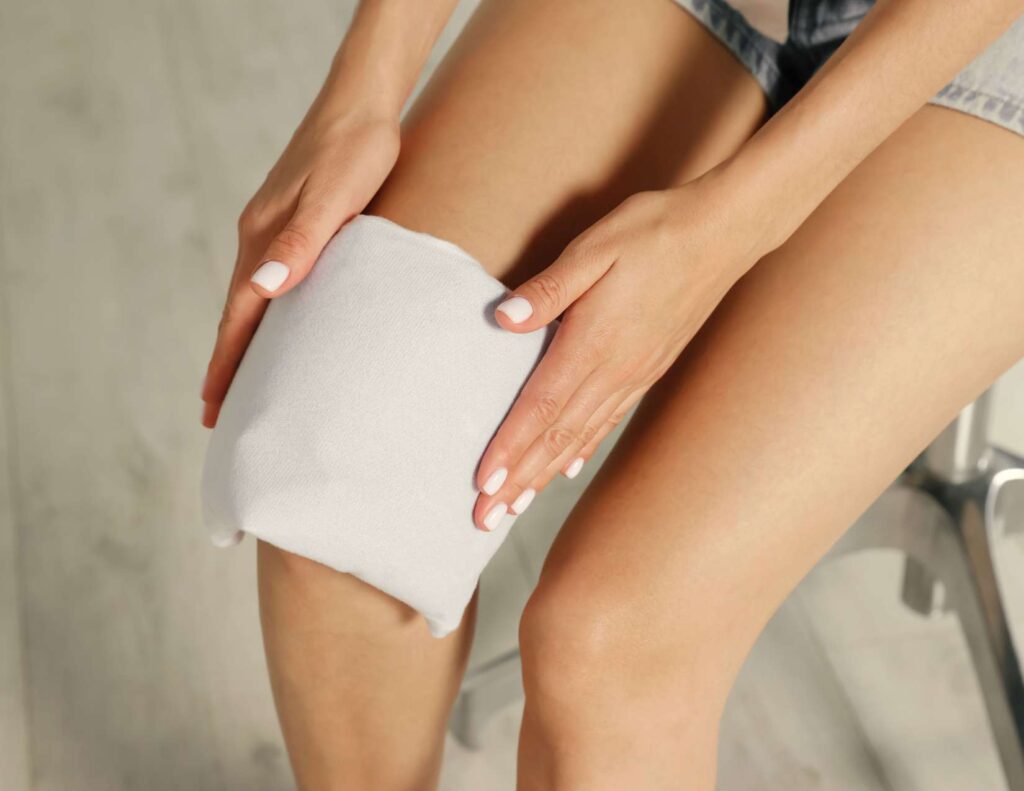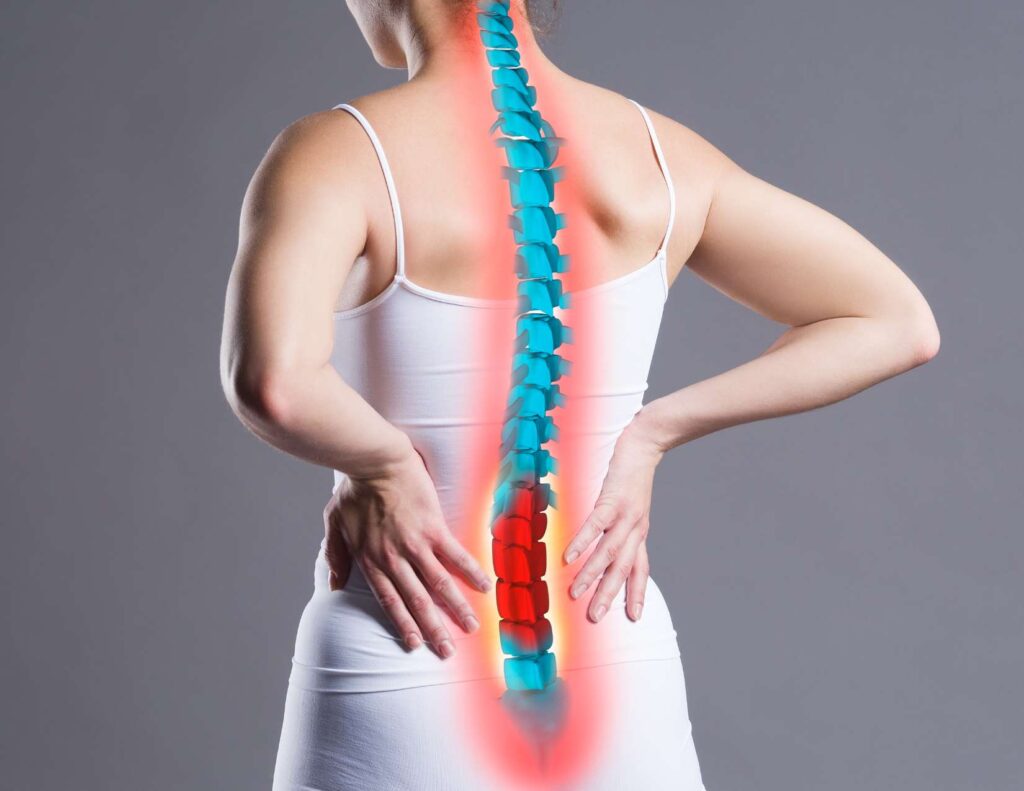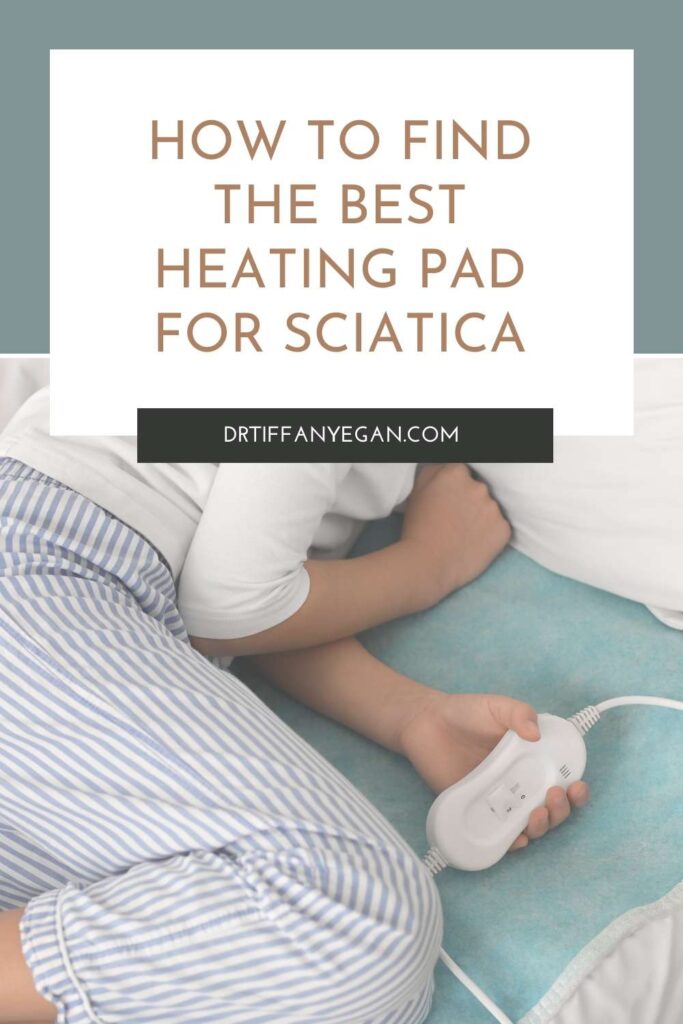How to Find the Best Heating Pad for Sciatica
As someone who has experienced sciatica pain, I know how debilitating it can be. The pain can range from a mild discomfort to a sharp, shooting pain that makes it difficult to move. Fortunately, there are ways to manage the pain, and one of the most effective methods is using a heating pad for sciatica.
In this article, I will explain what sciatica is, how heating pads can help relieve the pain, types of heating pads available, factors to consider when choosing one, reviews and comparison of top heating pads, precautions to take when using them, and how to make a DIY heating pad at home.

Table of Contents
Understanding Sciatica and its Symptoms
Sciatica is a condition that affects the sciatic nerve, which is the longest nerve in the body, running from the lower back to the legs. When the nerve is compressed or irritated, it can cause pain, numbness, tingling, or weakness in the lower back, hips, buttocks, and legs. The pain can be sharp or dull, and it can be on one or both sides of the body.
Sciatica can be caused by various factors, such as a herniated disc, spinal stenosis, degenerative disc disease, spondylolisthesis, or piriformis syndrome. It can also be triggered by poor posture, improper lifting, prolonged sitting, pregnancy/postpartum, or obesity. The severity of the pain can vary depending on the cause and the individual’s health condition.
How Heating Pads Can Help Relieve Sciatica Pain
Heating pads are a popular choice for relieving CHRONIC sciatica pain because they provide warmth and comfort to the affected area, increase blood flow, and reduce inflammation. Chronic sciatica is typically when the discomfort has lasted more than 3 months and in the last stages of sciatica. When you apply heat to the sore muscles or nerves, it can help relax them and alleviate the pain. Heat therapy is also known to stimulate the release of endorphins, which are natural painkillers produced by the body.
Using a heating pad for sciatica can be a safe and effective way to manage the pain, as long as you follow the instructions and precautions. It’s important to choose the right type of heating pad for your needs and preferences, as well as take into account any medical conditions or medications you have. Let’s look at the different types of heating pads available.

Types of Heating Pads for Sciatica
There are several types of heating pads you can use for sciatica, each with its own advantages and disadvantages. Here are the most common types:
Electric Heating Pads
Electric heating pads are the most popular type of heating pads for sciatica, as they are easy to use, adjustable, and provide consistent heat. They come in various sizes and shapes, such as rectangular, square, or contoured to fit the body. Some models have multiple heat settings, auto shut-off, and washable covers. Electric heating pads are powered by electricity and need to be plugged into an outlet.
Microwavable Heating Pads
Microwavable heating pads are another option for sciatica pain relief, especially if you prefer a natural and portable solution. These pads are filled with organic materials, such as rice, wheat, or flaxseed, that can be heated in the microwave and retain heat for a certain period. They are non-electric and can be used anywhere, as long as you have access to a microwave.
Infrared Heating Pads
Infrared heating pads use a special type of heat, called far-infrared radiation, that penetrates deeper into the tissues than conventional heat. This type of heat is believed to have therapeutic benefits, such as improving circulation, reducing pain and inflammation, and boosting immune function. Infrared heating pads can be electric or non-electric and come in different shapes and sizes.
Chemical Heating Pads
Chemical heating pads are disposable pads that contain chemicals, such as iron, charcoal, or salt, that react with air and produce heat. These pads are convenient for travel or outdoor activities, as they don’t require electricity or microwave. However, they have a limited lifespan and can’t be reused.

Factors to Consider When Choosing a Heating Pad for Sciatica
When you are choosing a heating pad for sciatica, there are several factors you should consider to ensure that you get the most out of it:
Size and Shape
The size and shape of the heating pad should match the area of your body that needs heat therapy. For example, if you have sciatica pain in your lower back, you may need a rectangular or contoured pad that covers the lumbar region. If you have pain in your legs or buttocks, you may need a larger pad that can wrap around the thighs or hips.
Heat Settings
The heat settings of the heating pad should be adjustable to suit your comfort level and the severity of the pain. Some pads have low, medium, and high settings, while others have a continuous temperature control. It’s important not to overheat the pad, as it can cause burns or skin irritation.
Safety Features
The heating pad should have safety features, such as auto shut-off, overheat protection, and a washable cover. Auto shut-off turns off the pad after a certain period of time, usually 1 or 2 hours, to prevent overheating and conserve energy. Overheat protection monitors the temperature of the pad and shuts it off if it overheats. A washable cover can keep the pad clean and hygienic.
User Reviews
Reading user reviews of the heating pad can give you an idea of its effectiveness, durability, and ease of use. Look for reviews from people who have sciatica or similar conditions, and see if they recommend the pad or not. Also, check if the manufacturer offers a warranty or customer support.
Price
The price of the heating pad can vary depending on the type, size, and features. While you don’t want to compromise on quality, you also don’t want to overspend on a pad that doesn’t meet your needs. Compare the prices of different pads and choose the one that offers the best value for money.

Top Heating Pads for Sciatica – Reviews and Comparison
Now that you know what to look for in a heating pad for sciatica, let’s review some of the top products on the market and see how they compare.
Sunbeam Heating Pad for Pain Relief, Standard Size
The Sunbeam Heating Pad is a popular choice for sciatica pain relief, as it provides consistent heat and has multiple heat settings. The pad is electric and can be plugged into an outlet. It measures 12 x 15 inches, which is a standard size for the lower back or neck. The pad has a soft, machine-washable cover and a 2-hour auto shut-off function. It also comes with a 5-year limited warranty. The price is around $20.
Pure Enrichment PureRelief XL Heating Pad for Back Pain and Cramps
The Pure Enrichment PureRelief XL Heating Pad is a larger pad that can cover the entire back or abdomen, making it a good option for sciatica pain that radiates to other areas. The pad measures 12 x 24 inches and has 6 heat settings, a moist heat option, and a 2-hour auto shut-off feature. It comes with a soft, microplush cover that is machine-washable. The pad is electric and has a 5-year warranty. The price is around $40.
MIGHTY BLISS™ Large Electric Heating Pad for Back Pain and Cramps Relief
The MIGHTY BLISS™ Large Electric Heating Pad is another option for sciatica pain relief, as it has a large size and multiple heat settings. The pad measures 12 x 24 inches and has 6 heat settings, a moist heat option, and a 2-hour auto shut-off feature. The pad is electric and can be plugged into an outlet. It comes with a soft, microplush cover that is machine-washable. The pad has a lifetime replacement guarantee. The price is around $35.
Nature Creation- Full Treatment Set- Herbal Heating Pad
The Nature Creation Full Treatment Set is a non-electric heating pad that uses a combination of herbs and grains to provide heat therapy. The set includes a large pad that can be used for the back, abdomen, or legs, and a smaller pad that can be used for the neck or shoulders. The pads can be microwaved or frozen, depending on the desired temperature. The pads have a soft, cotton cover that is removable and washable. The set comes with a 1-year warranty. The price is around $100.
How to Use a Heating Pad for Sciatica
Using a heating pad for sciatica is easy and straightforward, but there are some tips to keep in mind:
Prepare the Pad
Before using the heating pad, make sure it is clean, dry, and in good condition. If it has a cover, remove it and wash it according to the instructions. If it’s an electric pad, plug it into an outlet and adjust the heat settings. If it’s a microwavable pad, heat it in the microwave for the recommended time.
Apply the Pad
Place the heating pad on the affected area of your body, making sure it covers the entire area. If you have lower back pain, you can lie down on the pad or wrap it around your waist. If you have leg pain, you can place the pad under your thigh or on your buttocks. If you have neck pain, you can drape the pad over your shoulders. Make sure the pad is comfortable and not too hot or too cold.
Relax and Enjoy
Once the heating pad is in place, relax and enjoy the warmth and comfort. You can read a book, watch TV, or listen to music while the heat therapy is working. It’s recommended to use the heating pad for 15-20 minutes at a time, several times a day, depending on the severity of the pain. Don’t fall asleep while using the pad, as it can cause burns or damage the pad.

Alternatives to Heating Pads for Sciatica Pain Relief
While heating pads are a popular and effective way to relieve sciatica pain, there are also other methods you can try:
Cold Therapy
Cold therapy, also known as cryotherapy, involves applying cold to the affected area to reduce inflammation and numb the pain. You can use a cold pack, a bag of ice, or a frozen vegetable bag wrapped in a towel. Apply the cold therapy for 10-15 minutes at a time, several times a day, but don’t apply it directly to the skin, as it can cause frostbite or skin damage.
Stretching and Exercise
Stretching and exercise can help alleviate sciatica pain by improving flexibility, strengthening the muscles, and promoting circulation. You can try yoga, Pilates, or specific sciatica exercises recommended by your doctor or physical therapist. Make sure you do the exercises correctly and don’t overdo them, as it can worsen the pain.
Massage and Acupuncture
Massage and acupuncture are alternative therapies that can stimulate the muscles and nerves, release tension, and promote relaxation. Pressure point therapy for sciatica is a great (at-home) combination to use with heat! You can also visit a licensed acupuncturist who has experience in treating sciatica. They will be able to accurately identify the origin of your pain and create a personalized treatment plan.
Precautions and Safety Tips When Using Heating Pads for Sciatica
Although using heat for sciatica is generally safe and easy to use, there are some precautions and safety tips you should follow:
Don’t Overheat the Pad
Don’t use a heating pad that is too hot or too long, as it can cause burns, skin damage, or dehydration. Follow the instructions and heat settings of the pad, and test the temperature with your hand or a towel before applying it to your skin.
Don’t Use on Open Wounds or Infections
Don’t use a heating pad on open wounds, infections, or sensitive skin, as it can worsen the condition or cause infections. Wait until the skin is healed or consult your doctor before using the pad.
Using a Heating Pad During Pregnancy
It’s typically not recommended to use a heating pad during pregnancy, as it can possibly harm the fetus or cause contractions. Also, it’s not recommended to use a heating pad if you have certain medical conditions, such as diabetes, heart disease, or skin disorders, or if you take certain medications, such as blood thinners or painkillers.
During pregnancy, it’s beneficial to take a warm Epsom salt bath. However, if you want to use a heating pad during pregnancy, your safest choice would be to use a non-electric, microwavable pad. It’s also important to use it in shorter increments like 5-10 minutes at a time. Consult your doctor before using the pad.
Don’t Sleep with the Pad
Don’t sleep with the heating pad on, as it can cause burns or damage the pad. Use the pad only when you are awake and alert.
Don’t Use While Driving or Operating Machinery
Don’t use the heating pad while driving or operating machinery, as it can distract you or impair your vision. Use the pad only in a safe and comfortable environment.

DIY Heating Pad for Sciatica – How to Make One at Home
If you prefer a natural and inexpensive option for a heating pad, you can make one at home using common household items:
Materials
- A cotton or flannel fabric, cut into the desired size and shape
- Uncooked rice, wheat, or corn, enough to fill the fabric
- Optional: essential oils, such as lavender or peppermint, for aromatherapy
Instructions
- Sew the fabric into a pouch or rectangle, leaving a small opening.
- Fill the pouch with the uncooked grains, leaving some space for the grains to move around.
- Add a few drops of essential oils to the grains, if desired.
- Sew the opening closed.
- Microwave the pouch for 1-2 minutes, depending on the wattage of your microwave.
- Check the temperature and apply the pouch to the affected area.
Conclusion
Sciatica pain can be a challenging condition to deal with, but with the right tools and strategies, you can manage it effectively. Heating pads are a safe and convenient way to relieve the pain, and there are many types and brands to choose from. When selecting a heating pad for sciatica, consider the size, shape, heat settings, safety features, user reviews, and price. Remember to follow the instructions and precautions, and don’t hesitate to consult your doctor if you have any concerns. With a little patience and self-care, you can overcome sciatica pain and enjoy a better quality of life!







